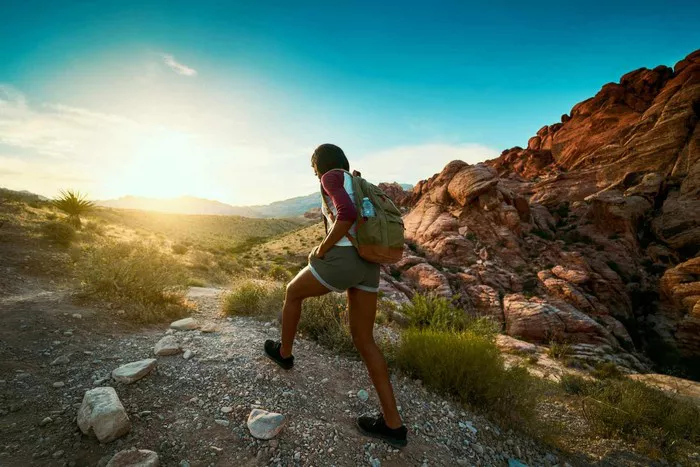Nestled in the heart of Tanzania, Mount Kilimanjaro stands as Africa’s tallest peak, a beacon for adventurers and trekkers from across the globe. Scaling its heights is an aspiration for many, an experience that promises breathtaking vistas and a profound sense of accomplishment. However, the journey to the summit is not to be underestimated; it demands preparation, perseverance, and an understanding of the time required to conquer its formidable slopes.
Understanding the Terrain
Before embarking on the journey to Mount Kilimanjaro’s summit, it’s essential to grasp the intricacies of its terrain. Kilimanjaro is a stratovolcano comprised of three volcanic cones: Kibo, Mawenzi, and Shira. The routes to the summit primarily traverse rugged landscapes, ranging from dense rainforests to alpine deserts, before culminating in a final push through snow and ice to Uhuru Peak, the highest point on Kibo’s crater rim.
Choosing the Right Route
One of the critical factors influencing the duration of the hike is the chosen route. Mount Kilimanjaro offers several routes, each varying in length, difficulty, and scenic beauty. The most popular routes include the Marangu, Machame, Lemosho, Rongai, and the Northern Circuit. While the Marangu route is often dubbed the “Coca-Cola route” due to its popularity and relatively gentle gradients, other routes like the Machame and Lemosho offer more gradual acclimatization, albeit with longer trekking days.
Evaluating Timeframes
The duration of the hike up Mount Kilimanjaro varies depending on the chosen route and the itinerary selected by tour operators. On average, most trekkers opt for a trek lasting between five to nine days, allowing for proper acclimatization and maximizing the chances of reaching the summit. However, shorter and more extended itineraries are available for those seeking different pacing or specific requirements.
Typical Itineraries
1. Five to Six-Day Routes
For those with limited time or prior high-altitude trekking experience, shorter itineraries such as the Marangu route can be completed in as few as five to six days. These expedited schedules involve fewer acclimatization days and more extended hiking hours, requiring a higher level of fitness and resilience to altitude-related challenges.
2. Seven to Eight-Day Routes
The majority of trekkers opt for itineraries spanning seven to eight days, which strike a balance between acclimatization and hiking intensity. Routes like the Machame and Lemosho typically follow this timeframe, allowing for gradual altitude adaptation and a higher chance of summit success.
3. Nine-Day Routes and Beyond
For those prioritizing acclimatization and seeking a more leisurely pace, longer itineraries extending to nine days or more are available. The Northern Circuit, known for its panoramic views and low traffic, typically spans nine days, providing ample time for trekkers to adjust to the altitude and enjoy the diverse landscapes of Kilimanjaro.
Factors Affecting Duration
Several factors can influence the duration of the hike up Mount Kilimanjaro:
1. Altitude: As trekkers ascend higher, the reduced oxygen levels can slow their pace and necessitate more frequent breaks for acclimatization.
2. Fitness Level: A higher level of fitness can contribute to faster hiking speeds and quicker recovery times, enabling trekkers to cover more ground each day.
3. Weather Conditions: Unpredictable weather, including rain, snow, and high winds, can impact trail conditions and visibility, potentially delaying progress.
4. Group Size: Larger groups may move more slowly due to coordination and rest breaks, whereas smaller groups or solo trekkers can often set a more flexible pace.
5. Individual Health: Factors such as age, pre-existing medical conditions, and altitude sensitivity can affect an individual’s ability to hike at a consistent pace and may necessitate additional rest days.
Conclusion
Embarking on the journey to summit Mount Kilimanjaro is a remarkable endeavor that requires careful planning, physical preparation, and a realistic understanding of the time involved. While the duration of the hike varies depending on the chosen route and itinerary, the experience itself is transformative, offering trekkers the opportunity to push their limits, connect with nature, and stand atop Africa’s highest peak.
Whether opting for a shorter, more intense ascent or a leisurely exploration of Kilimanjaro’s diverse landscapes, every step taken towards the summit is imbued with a sense of awe and accomplishment, making the journey truly unforgettable. So, lace up your boots, breathe in the crisp mountain air, and embark on the adventure of a lifetime up the majestic slopes of Mount Kilimanjaro.

